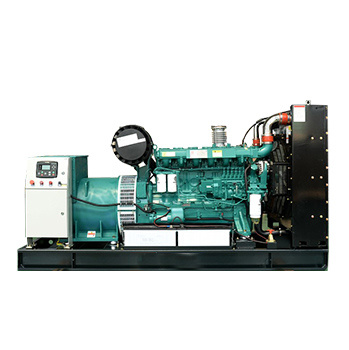Understanding Generator Sets: Essential Insights for Electrical Professionals
Jun 18,2025
Generator sets, commonly referred to as gensets, are integral components in the realm of electrical engineering, specifically concerning power generation solutions. A generator set typically comprises an engine coupled with an electrical generator to convert mechanical energy into electrical energy. This conversion process is crucial for supplying power in various applications, from residential to

Generator sets, commonly referred to as gensets, are integral components in the realm of electrical engineering, specifically concerning power generation solutions. A generator set typically comprises an engine coupled with an electrical generator to convert mechanical energy into electrical energy. This conversion process is crucial for supplying power in various applications, from residential to industrial settings.
The core function of a generator set is to provide backup power during electrical outages or to deliver electricity in areas lacking access to a reliable power grid. In today’s world, where dependence on electricity is paramount, the significance of a generator set cannot be overstated. They are particularly valuable in sectors such as healthcare, telecommunications, and manufacturing, where even brief power interruptions can lead to significant operational disruptions or safety hazards.
Generator sets can be categorized into two main types: portable and stationary. Portable generator sets offer flexibility and can be easily transported to different locations, making them ideal for construction sites or outdoor events. On the other hand, stationary generator sets are typically installed permanently at a specific location, providing a continuous power supply to facilities such as hospitals or data centers.
The efficiency and reliability of a generator set are influenced by several factors, including the size of the genset, the type of fuel used (diesel, natural gas, etc.), and the generator’s load capacity. When selecting a generator set, it is essential to consider the anticipated power needs, potential load variations, and the environment in which it will operate.
Modern advancements in generator set technology have led to the development of more efficient and eco-friendly units. Many manufacturers are now focusing on reducing emissions and noise levels while enhancing performance. Incorporating features like automatic transfer switches and remote monitoring capabilities can further optimize operational efficiency and provide users with real-time data on performance metrics.
In summary, understanding generator sets is vital for professionals in the electrical and power generation industries. These systems play a crucial role in ensuring a continuous supply of electricity, safeguarding operations against unexpected outages, and enhancing the overall resilience of power infrastructures. Continuous learning and adaptation to new technologies will empower electrical professionals to make informed decisions regarding the selection and maintenance of generator sets, ultimately leading to a more efficient and sustainable energy future.
The core function of a generator set is to provide backup power during electrical outages or to deliver electricity in areas lacking access to a reliable power grid. In today’s world, where dependence on electricity is paramount, the significance of a generator set cannot be overstated. They are particularly valuable in sectors such as healthcare, telecommunications, and manufacturing, where even brief power interruptions can lead to significant operational disruptions or safety hazards.
Generator sets can be categorized into two main types: portable and stationary. Portable generator sets offer flexibility and can be easily transported to different locations, making them ideal for construction sites or outdoor events. On the other hand, stationary generator sets are typically installed permanently at a specific location, providing a continuous power supply to facilities such as hospitals or data centers.
The efficiency and reliability of a generator set are influenced by several factors, including the size of the genset, the type of fuel used (diesel, natural gas, etc.), and the generator’s load capacity. When selecting a generator set, it is essential to consider the anticipated power needs, potential load variations, and the environment in which it will operate.
Modern advancements in generator set technology have led to the development of more efficient and eco-friendly units. Many manufacturers are now focusing on reducing emissions and noise levels while enhancing performance. Incorporating features like automatic transfer switches and remote monitoring capabilities can further optimize operational efficiency and provide users with real-time data on performance metrics.
In summary, understanding generator sets is vital for professionals in the electrical and power generation industries. These systems play a crucial role in ensuring a continuous supply of electricity, safeguarding operations against unexpected outages, and enhancing the overall resilience of power infrastructures. Continuous learning and adaptation to new technologies will empower electrical professionals to make informed decisions regarding the selection and maintenance of generator sets, ultimately leading to a more efficient and sustainable energy future.
Previous:





